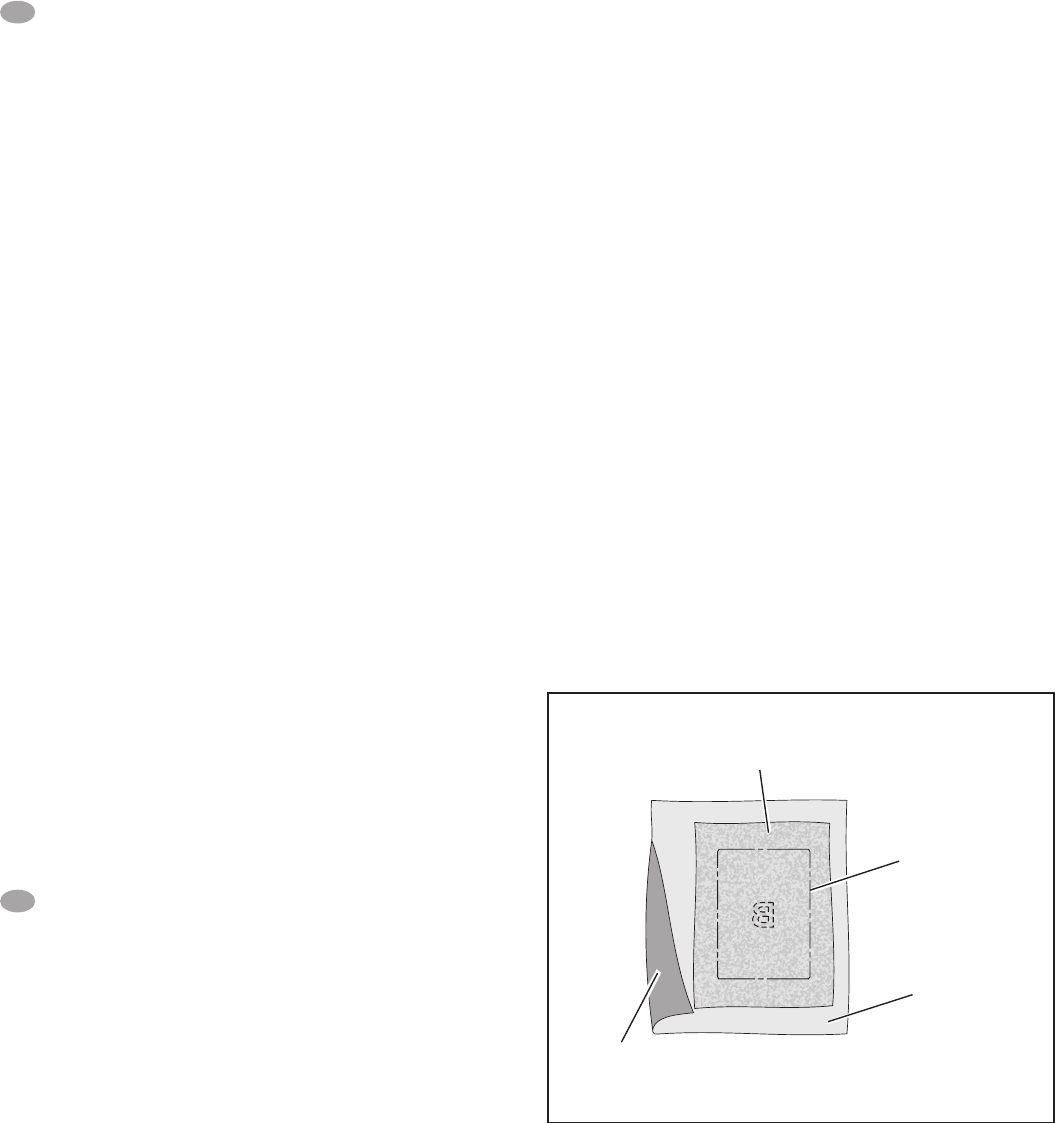
66
Stabilizer (Adhesive surface facing down)
Entoilage (surface adhésive orientée vers le bas)
Entretela (supercie adhesiva hacia abajo)
Hoop position
Position du cerceau
Posición del aro
Embroidering surface (Top side)
Surface de broderie (côté supérieur)
Supercie a bordar (Lado de arriba)
Material (Under side)
Tissu (Côté de dessous)
Material (Reverso)
USING FABRIC AND STABILIZER
FABRIC
Use stabilizer to produce best results when embroidering on
the following fabrics.
Fabrics which lack rmness or stability such as lightweight
cotton.
Lightweight fabrics such as this, may lack firmness or
stability and when embroidered may pull in, which may
result in problems such as shrinkage and puckering of the
fabric around the embroidery area.
Stretchy fabrics
The fabric may stretch when tightening the hoop, the result
may be uneven embroidery. Furthermore, when the fabric
is removed from the hoop after embroidery is complete, the
fabric may shrink and cause the embroidered pattern to
become distorted.
Embroidery can be applied to many types of fabrics, but it may
be necessary to prepare these fabrics in a special manner.
* Fabrics with a loopy or napped surface such as towels, use
a water soluble stabilizer both on the underside and on the
topside of the fabric.
* Denim and linen are considered unstable because of the
loose weave, use a medium weight cut-away stabilizer on the
backside.
* T-shirt type fabric usually requires at least one, sometimes
two layers of soft mesh-type cut-away stabilizer on the
backside.
* For medium to heavyweight stable woven fabric, use a
medium to heavy weight tear-away type stabilizer.
* For soft or sheer fabrics, use a rinse-away type stabilizer.
Stabilizer is a non-woven substance. There are a variety of
stabilizers available: tear-away, cut-away, wash-away and
those that are removed by applying heat. Which stabilizer
you choose will depend on the nature of the fabric on which
you are embroidering. Always follow the manufacturer’s
instructions on how to use and apply the stabilizer correctly.
Generally, the stabilizer should be larger in size than the hoop
with which it is being used. When embroidery is completed,
use a fine point scissor to carefully remove any excess
stabilizer from the embroidery area.
STABILIZER


















